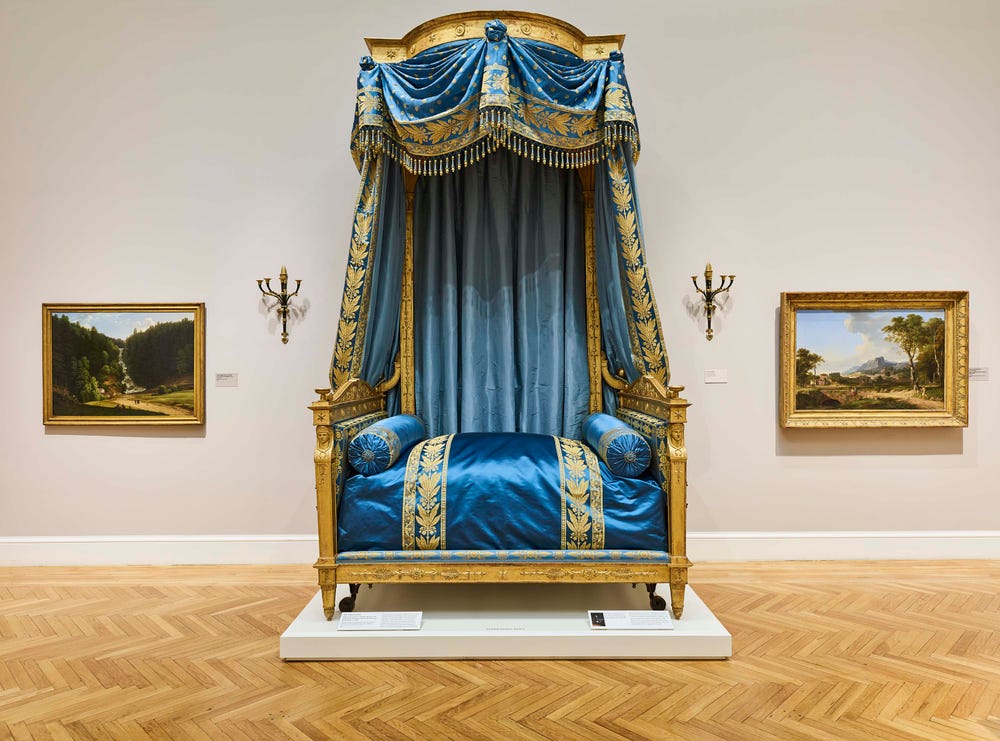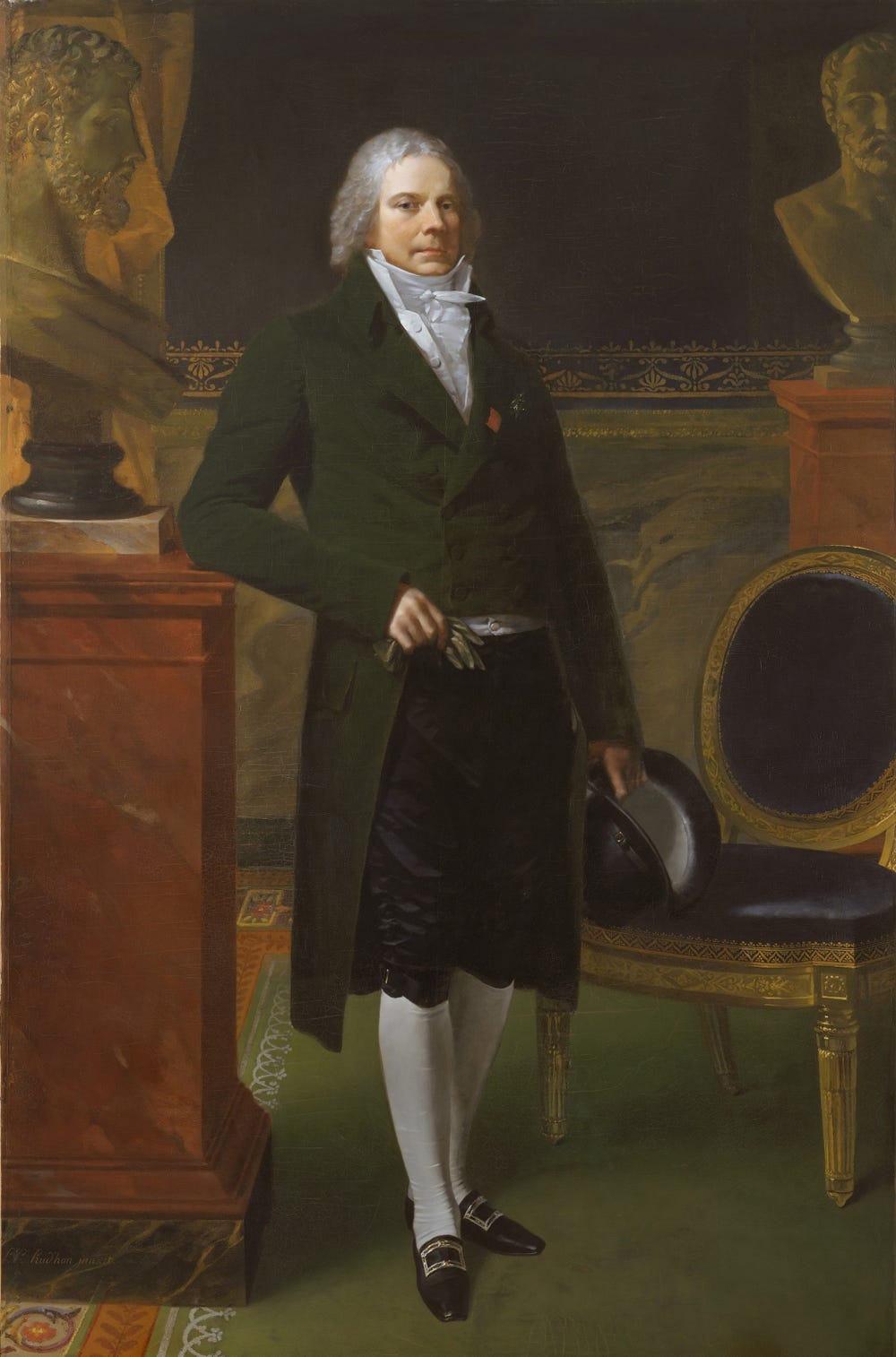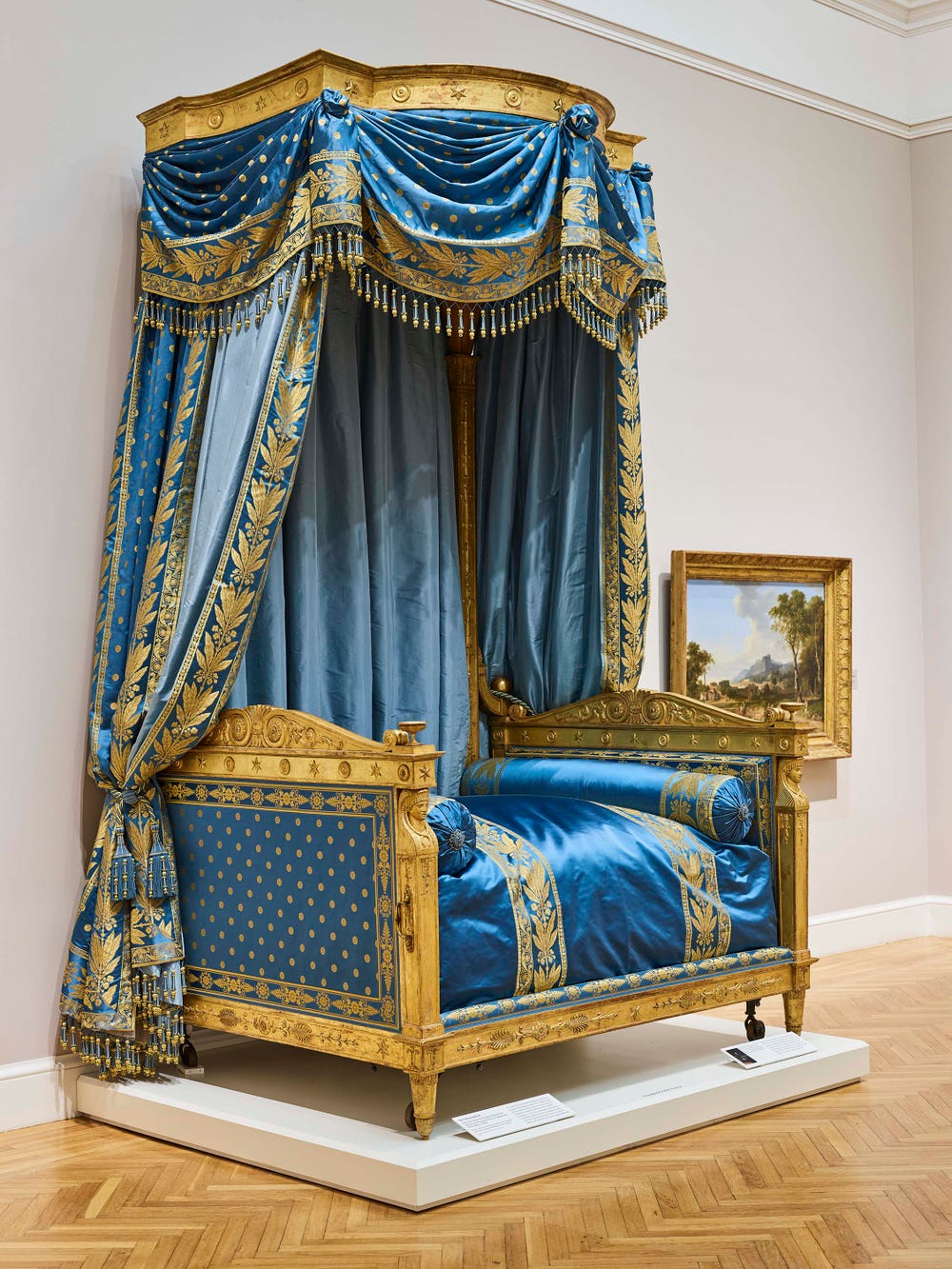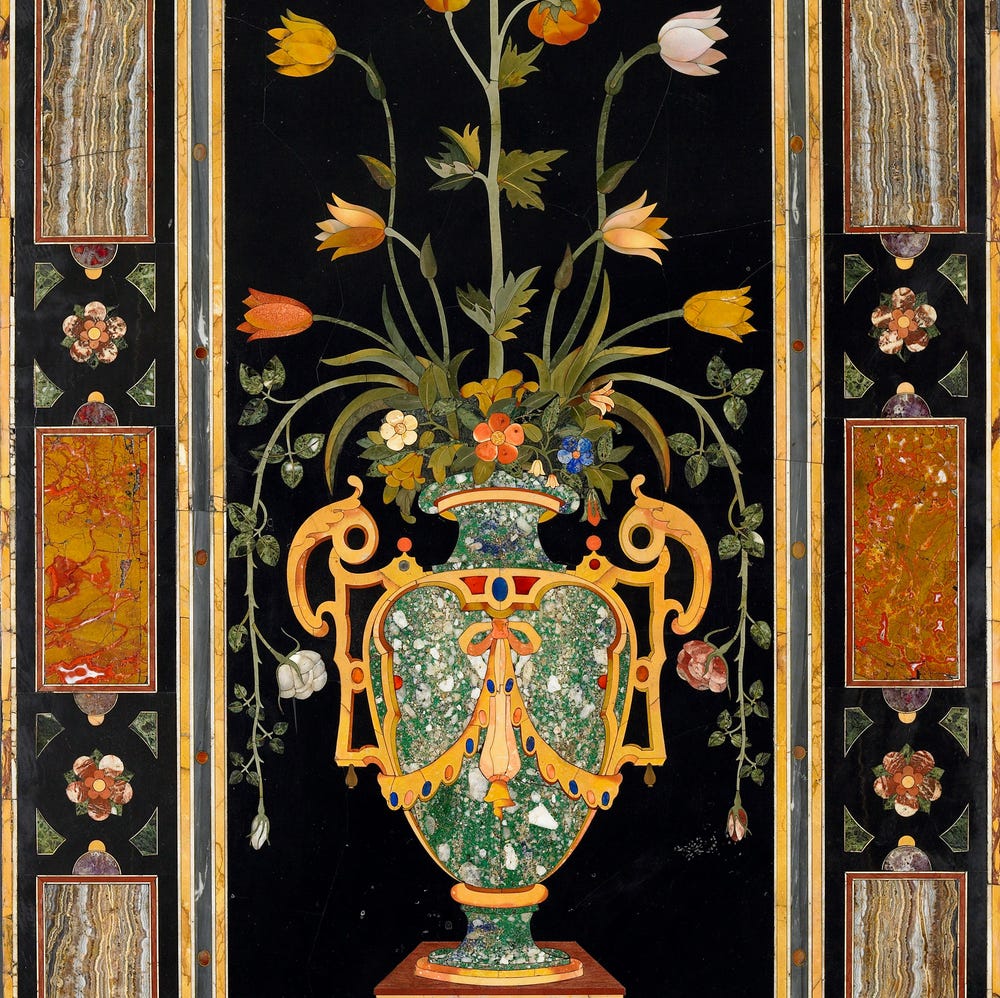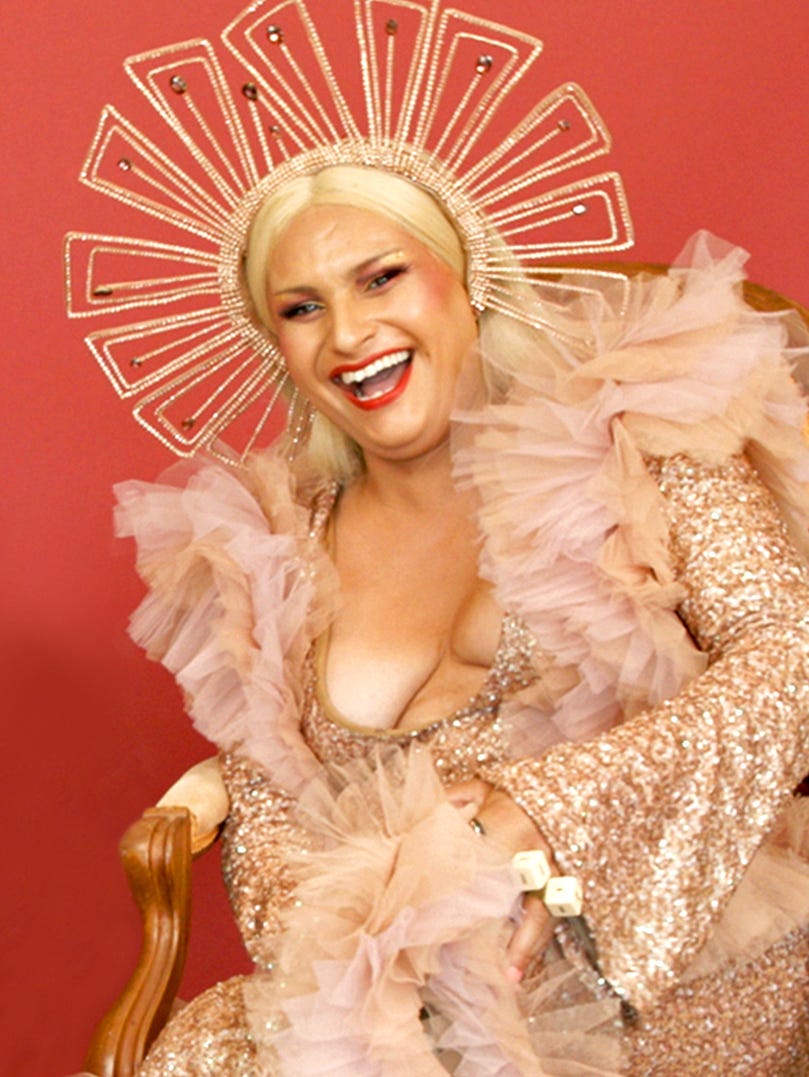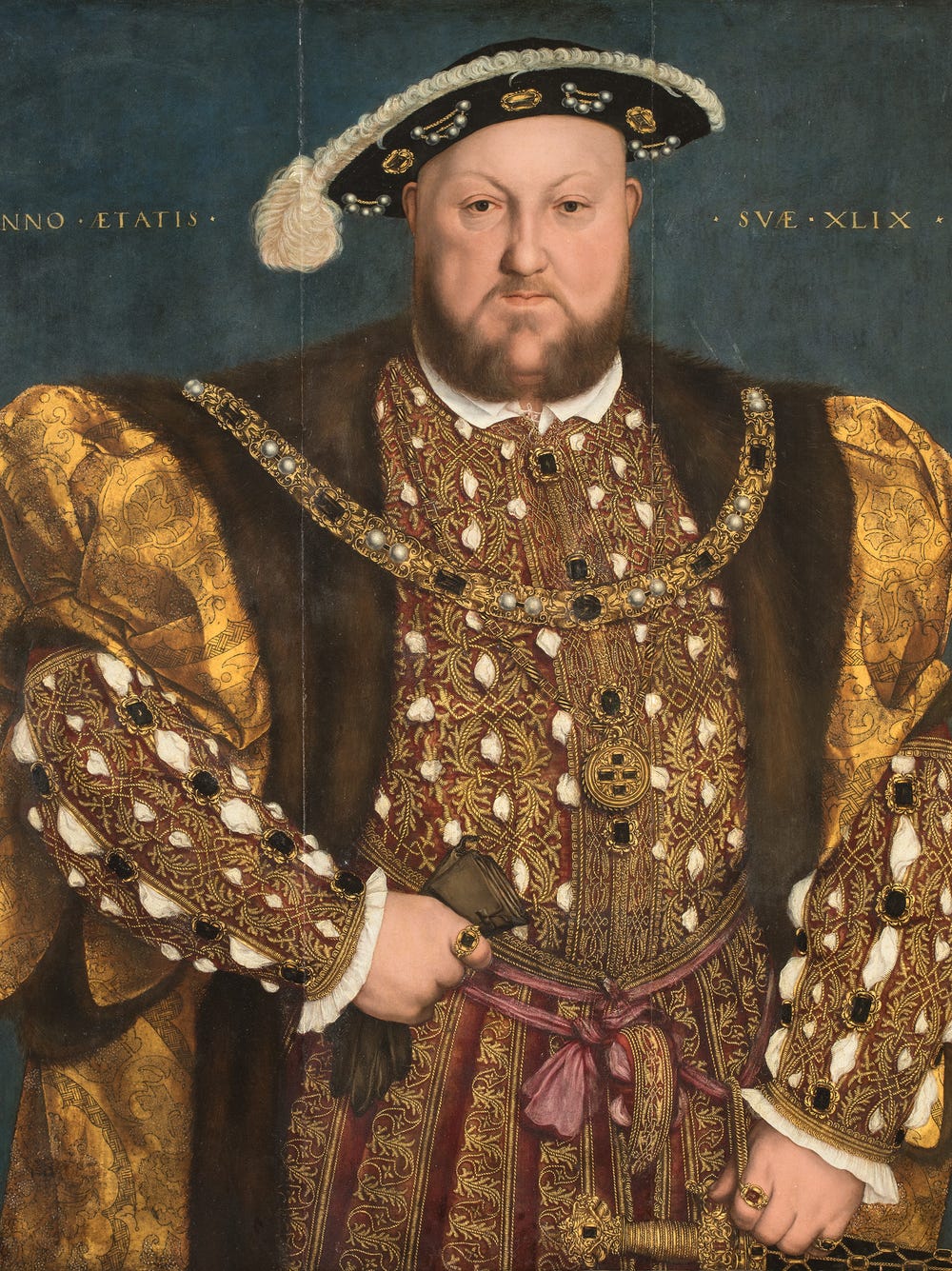The Talleyrand Bed: A State Bed Commissioned in Times of Conflict
By Martin Chapman
July 7, 2020
This magnificent bed was made for one of the most prominent political figures of the late eighteenth and early nineteenth centuries, Charles-Maurice de Talleyrand-Périgord, prince of Benevento and prince of Talleyrand (1754–1838). Talleyrand was instrumental in bringing Napoleon to power in 1799 and then manipulating the emperor’s downfall from 1807. He thrived in times of conflict through the French Revolution, under Napoleon’s Empire, and as the French representative at the Congress of Vienna in 1814–1815, which shaped the future of Europe. Described by the writer Madame de Staël as “the most impenetrable and indefinable of men” for his ability to influence and shape politics, he was famously derided by Napoleon as “shit in a silk stocking” in a public dressing down in 1809.
Pierre Paul Prud'hon, Charles Maurice de Talleyrand Périgord (1754–1838), Prince de Talleyrand, 1817. Oil on canvas, 85 x 55 7/8 in. (215.9 x 141.9 cm). Metropolitan Museum of Art, Purchase, Mrs. Charles Wrightsman, gift in memory of Jacqueline Bouvier Kennedy Onassis, 1994.190
Talleyrand was a survivor who adapted according to rapidly changing times. Beginning his career as a priest, he was passed over to be head of his aristocratic family because of a birth defect (he had a club foot and walked with a limp). He rose to become representative of the church at the court of Louis XVI and was made bishop of Autun in 1788. During the Revolution when the church was effectively outlawed, Talleyrand abandoned the priesthood and became a politician and diplomat. When events became even more perilous with the Terror (1793-1794), he fled into exile, biding his time in the United States for a couple of years. Talleyrand then reemerged in France in 1796 and actively supported Napoleon’s coup d’état in 1799. The emperor made him minister of foreign affairs and created him prince of Benevento (a former papal fiefdom in southern Italy) in 1806. It is for this high office and Talleyrand’s elevated status as prince that this bed was created in these years.
The Talleyrand state bed, made for Charles-Maurice de Talleyrand-Périgord, prince de Bénévent (1754–1838), ca. 1805. Wood, carved and gilded; modern silk damask upholstery and passementerie; iron support; 140 3/16 x 81 7/8 x 64 3/16 in. (356 x 208 x 163 cm). Fine Arts Museums of San Francisco, Museum purchase, Art Trust Fund in memory of Xavier Bonnet, 2019.61
With its domed canopy set at twelve-feet high, elaborate draped silk hangings, complex dangling passementerie (trimmings), and richly carved giltwood, this is a state bed, or lit de parade. It was intended to reflect Talleyrand’s status as a prince first of all, then as a government minister. The neoclassical Empire style was used by Napoleon and the imperial court as visual propaganda. By appropriating the bold forms and ornament from classical antiquity, the French Empire was making a statement about being a successor to the glories of ancient Greece and Rome. This new decorative program was imitated across France and promoted in the lands conquered by Napoleon. A version of this Empire style even appeared in the United States.
The bed is conceived in the manner of the grand lits made for Napoleon and the imperial family, who were not shy about making extravagant gestures in the royal palaces of the former Bourbon dynasty. These luxurious refurnishings of the palaces were overt statements trumpeting the successes of the Empire, which was at its zenith in these years. Talleyrand, ever the aristocrat of the old world when it suited him, continued the pre-Revolutionary tradition of French kings and princes by holding a lever, a custom of receiving in the bedchamber while dressing in the morning. Talleyrand would dress for up to two hours in front of his visitors with his state bed playing a significant role as an emblem of his princely status, rather like a throne.
The bed was supplied for Talleyrand’s newly acquired residence, the Château de Valençay, a sprawling sixteenth-century country estate in the Berry region with impressive large domed towers commanding views over the countryside. It was bought in 1803 at the behest of (and probably paid by) Napoleon for Talleyrand’s role as foreign minister to entertain diplomatic guests. The most celebrated chef of the day, Marie-Antoine Carème, cooked at Valençay as Talleyrand regarded excellent food as an important tool of diplomacy. The interior of the chateau was completely refurnished in the Empire style by the architect Jean-Auguste Renard (1744–1807), who probably commissioned this state bed from one the major furniture makers in Paris. Although the giltwood frame of the bed is unstamped by its maker, it may have been constructed by the chief imperial supplier Jacob-Desmalter, who made much furniture for Napoleon’s palaces in these years.
Chateau de Valençay
The bed has wooden wheels underneath that, combined with two large handles on the front posts, allow the bed to be pulled out from the wall to facilitate its making. However, it is not certain that Talleyrand actually slept in this bed. He had other more modest beds in his residence that would have been more convenient for him to sleep in. He was also reputed to be terrified of falling out of bed, perhaps a consequence of his disability. This bed is set very high, puffed up by no fewer than three mattresses, so Talleyrand would have needed steps to get in and out. We also know that he required his valets de chambre to make a deep hollow in the middle of his bed to cocoon him.
Talleyrand did not get to enjoy his prized chateau for long. Suspecting Talleyrand’s disloyalty, Napoleon punished his minister by billeting the Spanish princes at Valençay from 1808. The emperor had kidnapped these members of the Spanish royal family, whom he lured across the border as a pretext for negotiations, at Bayonne in southwestern France. Although Spain had loyally supported France’s revolutionary wars by supplying troops (the only European state to do so willingly), Napoleon embarked on the so-called Peninsula campaign, invading Spain and Portugal in 1808. By this stage, realizing that Napoleon was never going to stop his relentless conquests across Europe, Talleyrand resigned as foreign minister. Although Talleyrand had counseled the emperor to halt his advances and consolidate his power in Europe, thus establishing the worthy principles gained from the Enlightenment and the French Revolution, Napoleon continued to pursue his campaigns—even though France was exhausted and nearly bankrupt. At this critical time, Napoleon had his famous scatological outburst (mentioned above “de la merde dans un bas de soie”) in front of his marshals in 1809 to which Talleyrand responded privately “pity that so great a man should have been so badly brought up”. Talleyrand had already opened secret negotiations with the tsar of Russia and the emperor of Austria by this time, which would position him as the prime negotiator for France at the Congress of Vienna when Napoleon eventually fell in 1814.
The Spanish princes were provided with many luxuries at Valençay, including expensive Breguet watches and whole new suites of furniture suitable for royalty. A theater was built for their entertainment and Talleyrand imposed strict royal etiquette. The new furniture included grand beds, so we assume that the princes did not occupy Talleyrand’s bed, however imposing it was. Talleyrand was surprised that the young Spanish princes were so poorly educated and that they had been taught neither to dance or hunt, two skills considered essential to the conduct of royalty. After the princes returned to Spain in 1813, Talleyrand was angry to discover that illustrations had been torn out of the precious books in his library by the princes’ tutor. Talleyrand effectively got full use of his chateau only after the fall of Napoleon.
The Talleyrand Bed installed at the Legion of Honor.
The bed was reduced in height at some point, probably to move it to a bedroom with ceilings lower than twelve feet. It was sold from Valençay in 1899 by the estate of Talleyrand’s great nephew. Restored to its original height, the bed was entirely refurbished in 2012 by the brilliant late upholsterer and art historian Xavier Bonnet, who supplied all the garnitures for the seat furniture and the curtains for the Legion of Honor’s Salon Doré in 2014. Bonnet researched documents of Empire upholstery to inform his re-creation of the bed’s elaborate drapery. The hangings are made of two different silks: mid-blue heavy satin and pale blue faille. They are applied with wide borders woven with bold Empire ornament of laurel garlands, anthemions, and medallions. For the design of the medallions sprinkled on the satin of the canopy, Bonnet was inspired by an old piece of fabric he discovered surviving hidden inside the dome of the bed. He also designed the dangling spindle forms of the passementerie applied below the drapery decorating the canopy and the bottom of the curtains. The bed curtains are made in two layers, the heavy blue satin on the outside with the border are decorative while the inside set of curtains, made of the paler blue silk faille, could be drawn around the bed when it was used. Europeans, particularly the French, loved being enclosed in their beds by curtains to exclude draughts in winter. Bonnet devised the three mattresses following precedents of the early nineteenth century. Interior springs had not been used at that point, so he re-created what would have been considered the most extreme luxury in beds—two wool mattresses lying on wooden slats with a top mattress of feather and down, to provide the greatest comfort for a prince of the French Empire.
This bed is now installed in the gallery of Revolution and Empire, Gallery 14 at the Legion of Honor, and is waiting to welcome visitors back to the museum as a spectacular symbol of one of the greatest statesmen of the early nineteenth century.
Text by Martin Chapman, Curator in Charge, European Decorative Arts and Sculpture and interim Curator In Charge, European Art.
Learn more about European decorative arts at the Legion of Honor.
